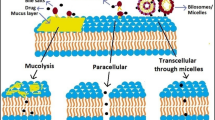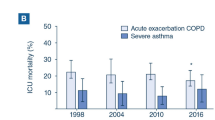Abstract
The efficacy of inhaled antibiotics is often impaired by insufficient drug penetration into plugged and poorly ventilated airways. Liquid ventilation with perfluorocarbon (PFC) containing emulsified aqueous antibiotics, or antibacterial perfluorocarbon ventilation, could potentially improve treatment of respiratory infections when used as an adjunct therapy to inhaled antibiotics. The molecular structure and concentration of the fluorosurfactant used to stabilize such water-in-PFC emulsions will have significant effects on the efficacy and safety of the resulting treatment. In the present study, emulsions are formulated with tobramycin in the aqueous phase using two different fluorosurfactants (termed FSL-PEG+FSL and FSH-PEG) at varying concentrations (C fs). An aqueous gel is used to evaluate the availability of emulsified drug to diffuse into an aqueous interface (such as mucus or biofilm) for varying emulsion formulations. Lastly, the cytotoxicity of the fluorosurfactants is characterized using human alveolar basal epithelial cells. Results showed that tobramycin delivery is reduced at low C fs due to inadequate drug emulsification and at large C fs due to hindered drug availability. Thus, maximal delivery occurs at intermediate values of C fs equal to 2 and 10 mg mL−1 for the FSH-PEG and FSL-PEG+FSL fluorosurfactants, respectively. The optimal emulsion formulation utilized FSH-PEG and demonstrated improved drug delivery relative to previously used formulations while exhibiting no cytotoxic effect. This work increases understanding of the physical means of pulmonary drug delivery via a water-in-PFC emulsion and represents a critical step in optimizing emulsion formulation for safe and effective treatment.






Similar content being viewed by others
References
Papi A, Bellettato CM, Braccioni F, et al. (2006) Infections and airway inflammation in chronic obstructive pulmonary disease severe exacerbations. Am J Respir Crit Care Med 173:1114–1121. https://doi.org/10.1164/rccm.200506-859OC
Sethi S, Muscarella K, Evans N, et al. (2000) Airway inflammation and etiology of acute exacerbations of chronic bronchitis. CHEST J 118:1557–1565
Sethi S, Murphy TF (2008) Infection in the pathogenesis and course of chronic obstructive pulmonary disease. N Engl J Med 359:2355–2365. https://doi.org/10.1056/NEJMra0800353
Davies JC, Bilton D (2009) Bugs, biofilms, and resistance in cystic fibrosis. Respir Care 54:628–640
Tunney MM, Field TR, Moriarty TF, et al. (2008) Detection of anaerobic bacteria in high numbers in sputum from patients with cystic fibrosis. Am J Respir Crit Care Med 177:995–1001. https://doi.org/10.1164/rccm.200708-1151OC
Labiris NR, Dolovich MB (2003) Pulmonary drug delivery. Part I: physiological factors affecting therapeutic effectiveness of aerosolized medications: physiological factors affecting the effectiveness of inhaled drugs. Br J Clin Pharmacol 56:588–599. https://doi.org/10.1046/j.1365-2125.2003.01892.x
Mukhopadhyay S, Staddon GE, Eastman C, et al. (1994) The quantitative distribution of nebulized antibiotic in the lung in cystic fibrosis. Respir Med 88:203–211
Orizondo RA, Babcock CI, Fabiilli ML, et al. (2014) Characterization of a reverse-phase perfluorocarbon emulsion for the pulmonary delivery of tobramycin. J Aerosol Med Pulm Drug Deliv 27:392–399. https://doi.org/10.1089/jamp.2013.1058
Orizondo RA, Fabiilli ML, Morales MA, Cook KE (2016) Effects of emulsion composition on pulmonary tobramycin delivery during antibacterial perfluorocarbon ventilation. J Aerosol Med Pulm Drug Deliv 29:251–259. https://doi.org/10.1089/jamp.2015.1235
Hirschl RB, Overbeck MC, Parent A, et al. (1994) Liquid ventilation provides uniform distribution of perfluorocarbon in the setting of respiratory failure. Surgery 116:159–167 discussion 167-168
Hirschl RB, Parent A, Tooley R, et al. (1995) Liquid ventilation improves pulmonary function, gas exchange, and lung injury in a model of respiratory failure. Ann Surg 221:79
Hirschl RB, Pranikoff T, Wise C, et al. (1996) Initial experience with partial liquid ventilation in adult patients with the acute respiratory distress syndrome. JAMA 275:383–389
Pohlmann JR, Brant DO, Daul MA, et al. (2011) Total liquid ventilation provides superior respiratory support to conventional mechanical ventilation in a large animal model of severe respiratory failure. ASAIO J 57:1–8. https://doi.org/10.1097/MAT.0b013e3182018a9f
Fabiilli ML, Lee JA, Kripfgans OD, et al. (2010) Delivery of water-soluble drugs using acoustically triggered perfluorocarbon double emulsions. Pharm Res 27:2753–2765. https://doi.org/10.1007/s11095-010-0277-5
Juliar BA, Bromley MM, Moncion A, et al. (2016) In situ transfection by controlled release of lipoplexes using acoustic droplet vaporization. Adv Healthc Mater 5:1764–1774. https://doi.org/10.1002/adhm.201600008
Alcid DV, Seligman SJ (1973) Simplified assay for gentamicin in the presence of other antibiotics. Antimicrob Agents Chemother 3:559–561. https://doi.org/10.1128/AAC.3.5.559
Engel LS, Callegan MC, Hill JM, O’callaghan RJ (1993) Bioassays for quantitating ciprofloxacin and tobramycin in aqueous humor. J Ocul Pharmacol Ther 9:311–320. https://doi.org/10.1089/jop.1993.9.311
Omri A, Beaulac C, Bouhajib M, et al. (1994) Pulmonary retention of free and liposome-encapsulated tobramycin after intratracheal administration in uninfected rats and rats infected with Pseudomonas aeruginosa. Antimicrob Agents Chemother 38:1090–1095. https://doi.org/10.1128/AAC.38.5.1090
Holtze C, Rowat AC, Agresti JJ, et al. (2008) Biocompatible surfactants for water-in-fluorocarbon emulsions. Lab Chip 8:1632. https://doi.org/10.1039/b806706f
Köster S, Angilè FE, Duan H, et al. (2008) Drop-based microfluidic devices for encapsulation of single cells. Lab Chip 8:1110. https://doi.org/10.1039/b802941e
Funding
This work was supported by the National Institutes of Health grant number R03AI096029.
Author information
Authors and Affiliations
Corresponding author
Ethics declarations
Conflict of interest
The authors declare that they have no conflict of interest.
Rights and permissions
About this article
Cite this article
Orizondo, R.A., Nelson, D.L., Fabiilli, M.L. et al. Effects of fluorosurfactant structure and concentration on drug availability and biocompatibility in water-in-perfluorocarbon emulsions for pulmonary drug delivery. Colloid Polym Sci 295, 2413–2422 (2017). https://doi.org/10.1007/s00396-017-4216-4
Received:
Revised:
Accepted:
Published:
Issue Date:
DOI: https://doi.org/10.1007/s00396-017-4216-4




